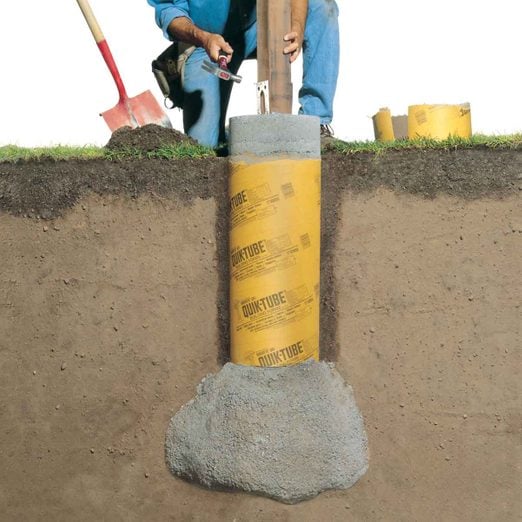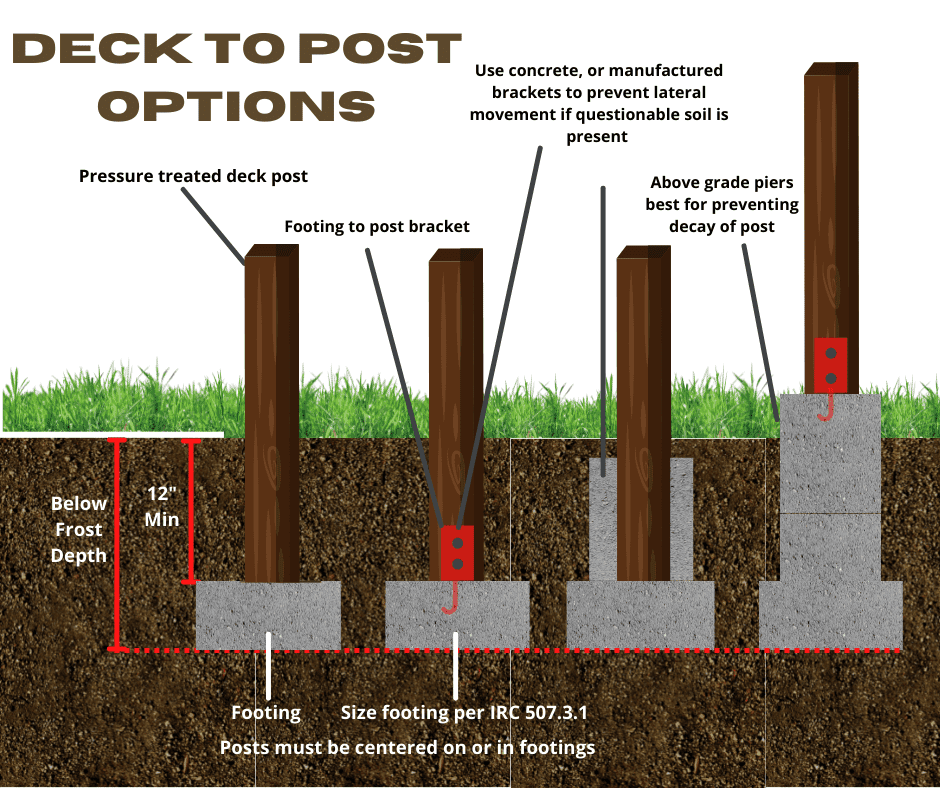Take Full Advantage Of the Lifespan of Your Deck With Reputable and Solid Footings
In order to totally make best use of the life-span of your deck, it is essential to ensure that it is developed on reliable and solid footings. These grounds develop the foundation of your deck, offering stability and assistance, and are typically the distinction between a deck that lasts for decades and one that calls for consistent repair services. In this conversation, we will explore the importance of reliable grounds, the various kinds of solid ground materials, appropriate installment techniques, and how to keep and examine your deck's footings to prevent damage.
Importance of Reliable Grounds
When it comes to maximizing the life-span of your deck,The importance of trusted grounds can not be overemphasized. The footings act as the structure whereupon the whole framework relaxes, supplying security and assistance. Without a strong footing, the deck is susceptible to moving, sinking, and even collapse, which can substantially lower its lifespan and pose safety risks.

Picking the right kind of ground is additionally important. Employing a specialist to analyze the dirt, design the footings, and guarantee appropriate setup is extremely suggested.
Purchasing dependable footings may include extra expense and effort upfront, but it is a beneficial investment that will contribute to the lasting sturdiness and safety of your deck. By guaranteeing a solid foundation, you can enjoy your deck for several years ahead, recognizing that it is constructed to endure the test of time.
Types of Solid Footing Materials
To ensure the security and long life of your deck, it is vital to take into consideration the numerous kinds of strong footing materials available. The selection of footing product is important as it offers the necessary assistance and security to stand up to the weight and tons of the deck structure.
One trusted and typical material made use of for deck footings is concrete. Concrete footings are sturdy and supply outstanding stability. They can be put straight into the ground or use precast concrete grounds for less complicated setup. Another choice is helical piers, which are steel shafts with helical plates that are screwed into the ground. These piers supply outstanding load-bearing capacity and can be used in numerous soil problems.
For areas with bad soil problems, such as loose or extensive dirts, a footing system that makes use of steel or composite piers may be favored. Deck Footings. These piers are driven deep into the ground to get to stable soil layers, making certain the stability of the deck
In many cases, deck footings can likewise be built using cured lumber. It is vital to make certain that the lumber is properly dealt with to resist rot and decay triggered by direct exposure to moisture and insects.
When choosing a footing material for your deck, it is crucial to think about aspects such as dirt problems, environment, and local building ordinance. Consulting with an expert service provider or structural engineer can help establish one of the most appropriate footing product for your particular deck task.
Appropriate Installation Techniques for Footings
Taking into consideration the value of ensuring stability and resilience for your deck, it is necessary to recognize the correct installation techniques for footings. The success of your deck task counts greatly on the honesty of its structure, which is why adhering to the proper installment strategies is critical.
Firstly, it is essential to establish the ideal dimension and deepness of the footings based on the layout and lots demands of your deck. This info can be obtained from constructing codes or via examination with an architectural engineer. As a general regulation, grounds must be at the very least 12 inches in size and prolong below the frost line to stop clearing up or moving.
Once the measurements are established, the next step is excavation. Digging the openings for the footings need to be made with precision, ensuring they are deep sufficient and have a level base. Deck Footings. This will certainly offer a secure base for the footings
To further improve the stability of the grounds, it is advised to make use of a concrete mix with a toughness of at the very least 3,000 psi. This will make sure the footings can stand up to the weight and pressures applied by the deck.
Throughout setup, it is necessary to maintain the grounds degree and lined up correctly. This can be achieved by utilizing a level and string lines to assist the positioning of each footing.
Maintaining and Inspecting Your Deck's Footings
Normal maintenance and thorough assessments are essential for making sure the lasting stability and safety and security of your deck's footings. Gradually, grounds can give in More hints to deterioration, weather, and dirt motion, which can endanger their architectural integrity. To maximize the life expectancy of your deck's grounds, it is critical to execute a routine upkeep regimen and conduct extensive examinations.

Furthermore, it is crucial to evaluate footings for any kind of signs of damages or wear and tear. This consists of checking for fractures, splits, or falling apart concrete, along with any type Look At This of indicators of movement or negotiation. Any kind of issues must be addressed immediately to avoid more damages and guarantee the security of the deck.
In addition, it is recommended to check the bordering soil for any type of indicators of erosion or shifting. Soil activity can impact the stability of the footings, so it is very important to attend to any kind of soil-related concerns immediately.
Indicators of Ground Damage and How to Address Them
Footing damage can present serious dangers to the stability and security of your deck, making it important to quickly determine and attend to any kind of indicators of damage. Among one of the most typical indications of footing damages is sinking or clearing up of the deck. This can take place as a result of dirt disintegration, poor grounds, or bad building methods. It is critical to take prompt activity to stop additional damage if you notice that your deck is uneven or leaning. An additional indication of footing damage is collapsing or cracking of the concrete grounds. This can be triggered by freeze-thaw cycles, excessive dampness, or inadequate top quality concrete. If you observe any type of fractures or wear and tear in the footings, it is important to have them inspected and fixed by a specialist. Furthermore, if you observe any movement or moving of the deck, such as a deck that feels unpredictable when strolled on or wobbles when weight is used, maybe an indicator of footing damages. In such cases, it is advised to talk to a structural designer or a professional service provider to analyze the degree of the damage and figure out the appropriate strategy. Bear in mind, addressing ground damages immediately can help make sure the long-term stability and safety and security of your find deck.
Verdict
Finally, guaranteeing the integrity and toughness of footings is vital for optimizing the life-span of your deck. By utilizing strong footing materials and appropriately mounting them, you can protect against damages and maintain the stability of your deck. Regular upkeep and examinations will certainly additionally help identify any signs of footing damage and allow for timely repairs. Inevitably, taking these measures will aid maintain the integrity and longevity of your deck.
These footings create the structure of your deck, supplying stability and assistance, and are often the distinction in between a deck that lasts for years and one that requires constant fixings. In this conversation, we will explore the importance of dependable grounds, the various types of solid ground materials, proper installation methods, and exactly how to maintain and evaluate your deck's footings to prevent damages.Routine maintenance and thorough examinations are essential for making certain the long-lasting stability and safety and security of your deck's footings. Remember, resolving footing damages immediately can aid guarantee the lasting stability and safety of your deck.
By making use of strong ground materials and effectively installing them, you can protect against damage and keep the stability of your deck.